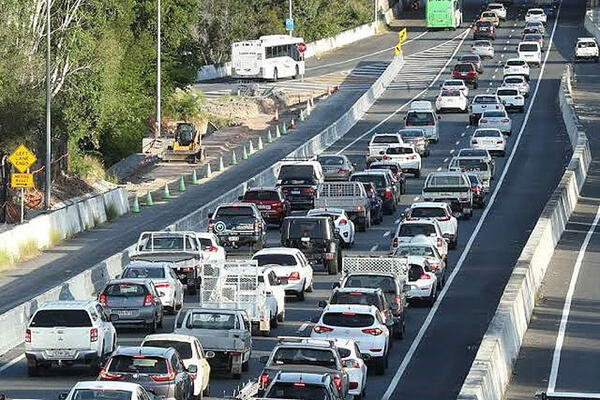
Roadworker Safety
Exploring Technology Options to Improve Worker Safety on high speed high volume roads
Research designed to explore innovative ways to use new, emerging and existing technologies to improve road worker safety on high speed high volume roads. The research was delivered in partnership with Deakin University.
Background
The M1—a 127km Motorway section between Sydney and Newcastle—sees many works on the road or roadside by workers on foot next to live traffic, posing challenges and risks to workers. While the risks are recognised by agencies involved in road construction and maintenance activities, significant work is needed to continue to make sure these risks are managed so that work can be completed safely.
Previous research suggests key risk factors related to working near live traffic include drivers speeding, ignoring signage and traffic controller instructions, aggression towards roadworkers, and roadworkers working in wet weather, at night and close to the traffic stream. Among these factors, drivers’ non-compliance with roadwork traffic controls, including posted speed limits, has been the most widely documented factor in the literature.
To address the risks identified at roadwork sites, researchers and practitioners have developed and tested various controls and technologies, such as autonomous and remote-controlled traffic control devices, innovative enforcement measures, work zone intrusion countermeasures, stop/slow bats with embedded lights and innovative visibility and lighting configurations.
This project looked to further identify opportunities for innovative use of existing technologies and novel ways of working in the areas of structural and roadside inspections, temporary traffic control devices and alternative ways of conducting temporary road works or maintenance activities on high speeds high volume roads such as the M1. It provides recommendations on technologies and practices that could be trialled in the future.
Findings
The final report of this research are presented below. Overall, the research concluded that:
- Findings from the literature review and the expert and industry consultations identified many innovative and promising safety and alternative work approaches. Some of these are demonstrably effective, while others are yet to be rigorously evaluated or are still in a development stage.
- These approaches are largely (though not entirely) underpinned and driven by new and emerging technologies and related systems.
- Smart motorway systems emerge as a basis for many of these improvements. Specific measures were included in the options analysis based on projected outcomes to inform recommendations.
- Recommendations are provided for future considerations and trials separately for three application areas: (1) temporary traffic management, (2) alternative work methods, and (3) asset inspection. The recommendations are identified as applicable to planned works, incident response, or both.
Documentation
This research is being delivered in partnership with iMOVE CRC and supported by the Cooperative Research Centres program, an Australian Government initiative.
